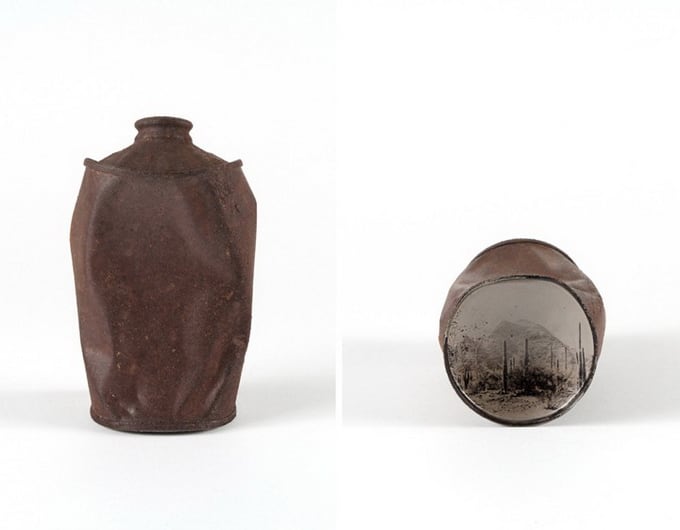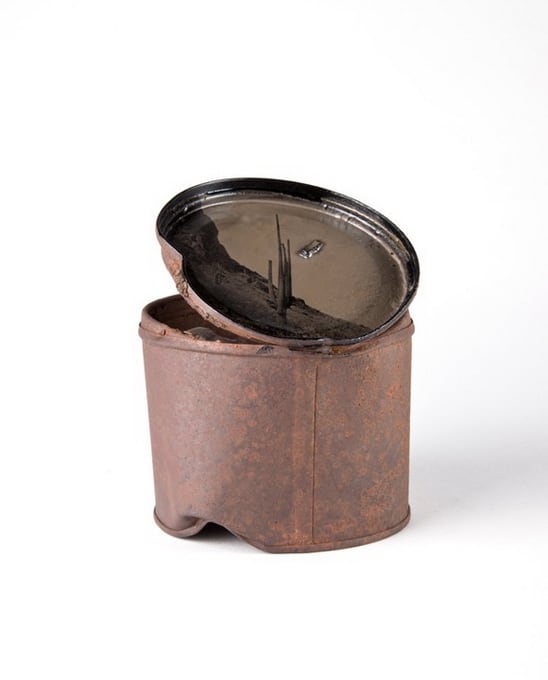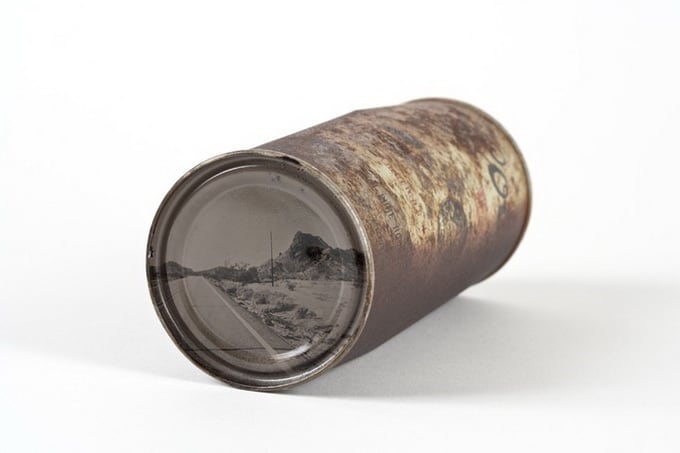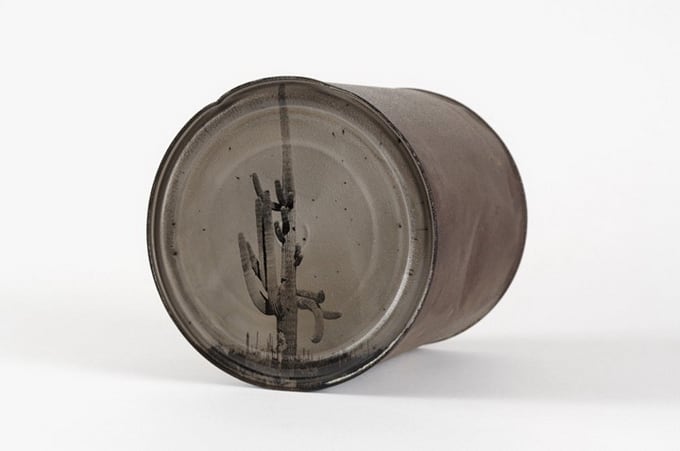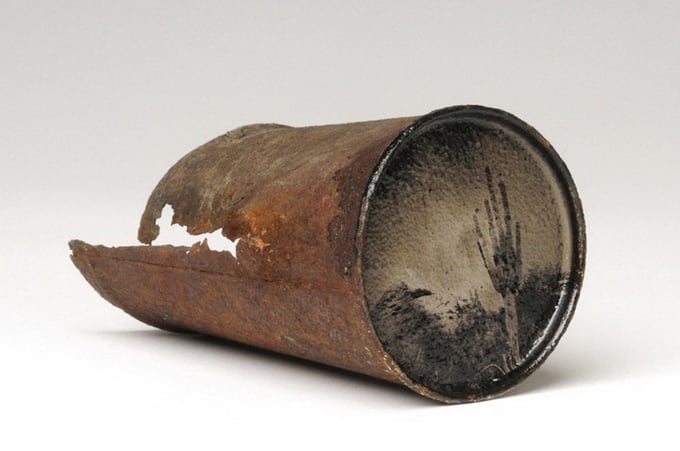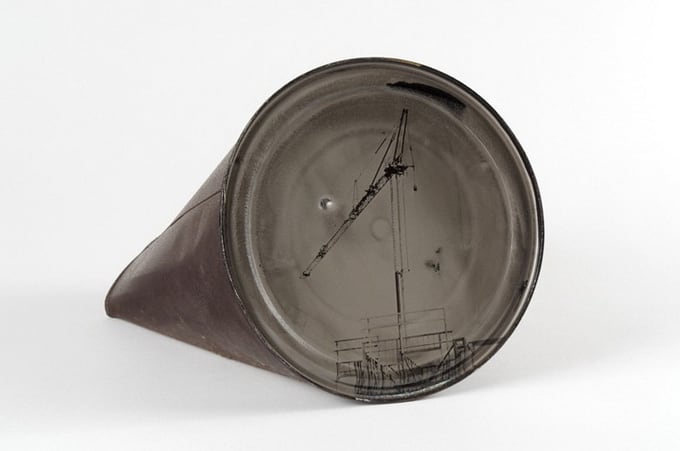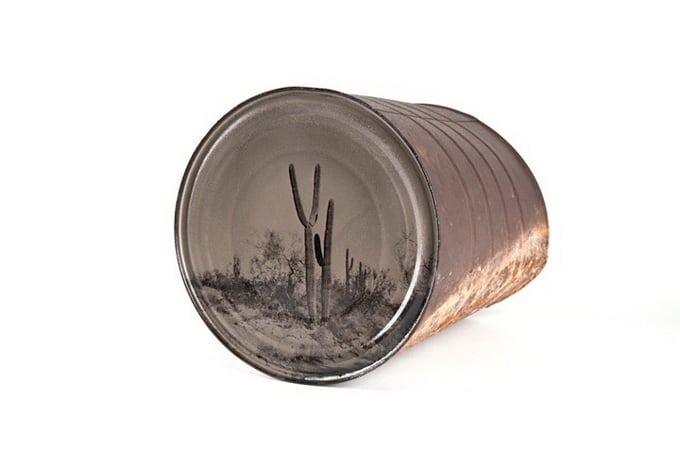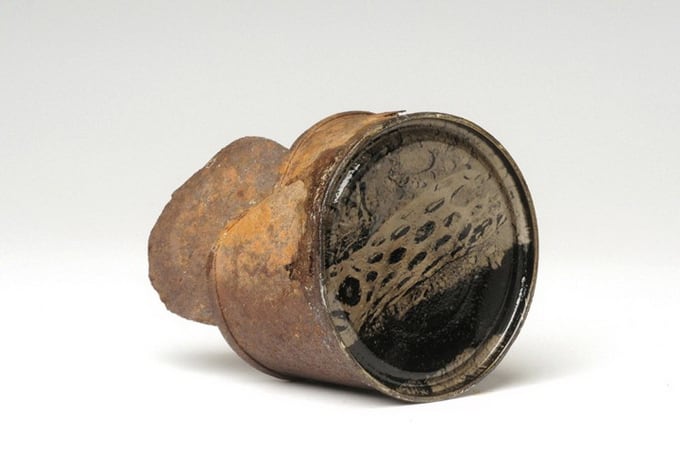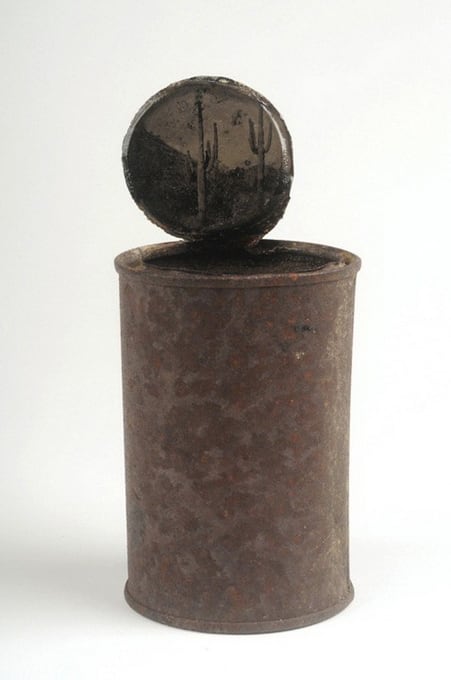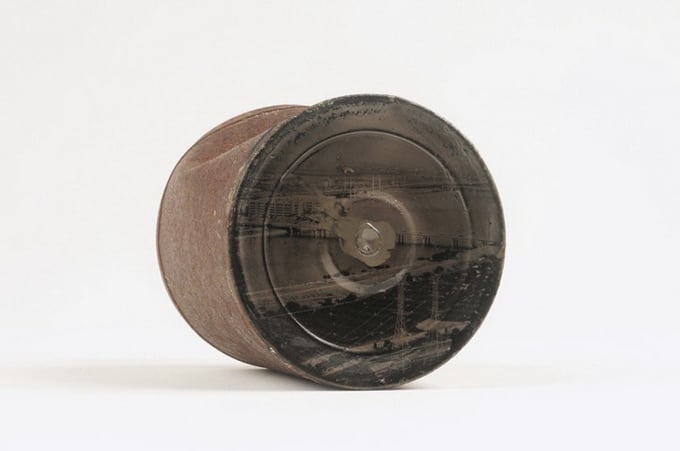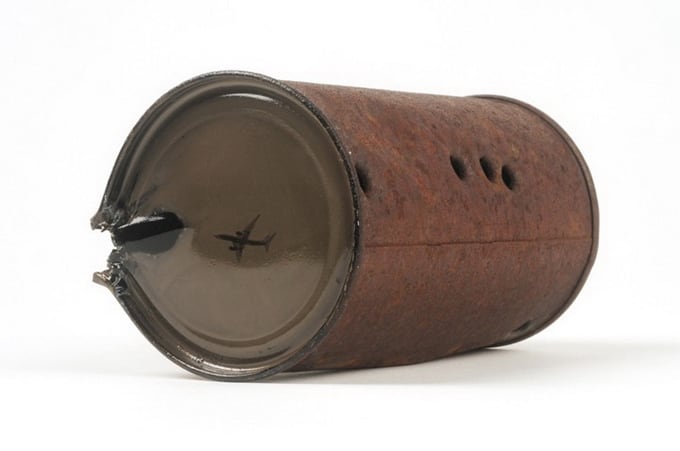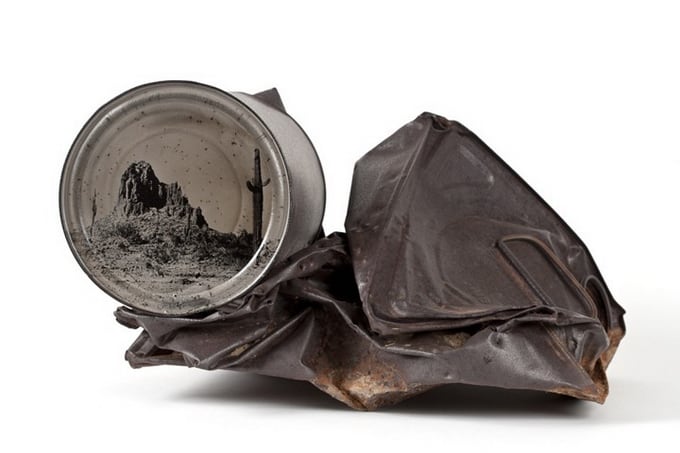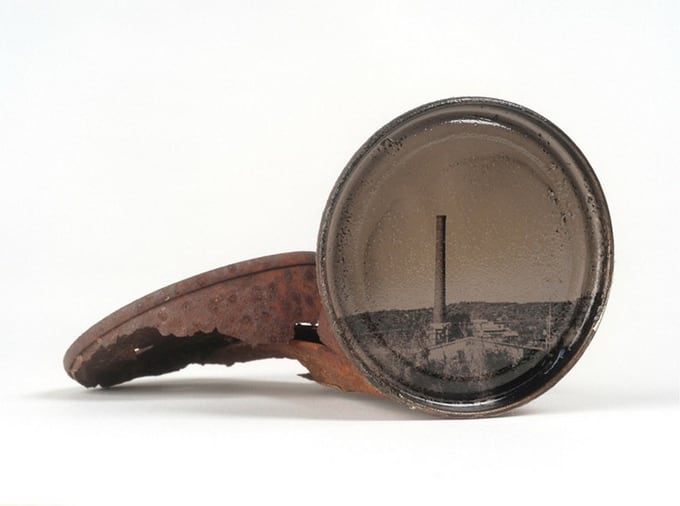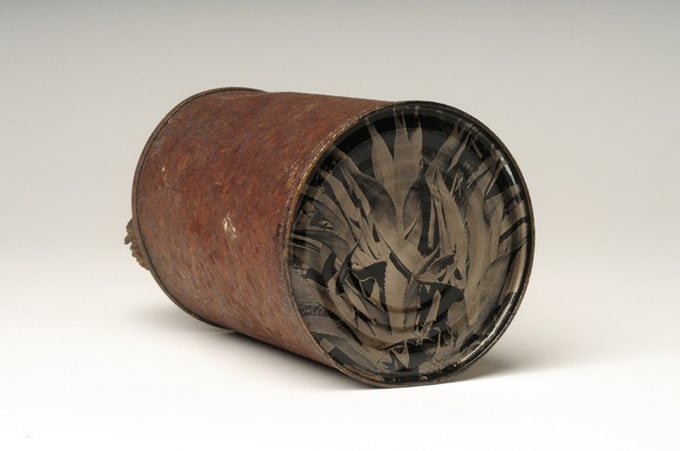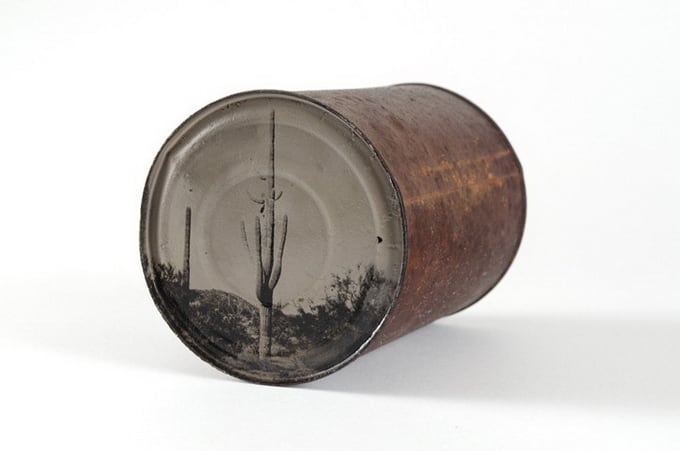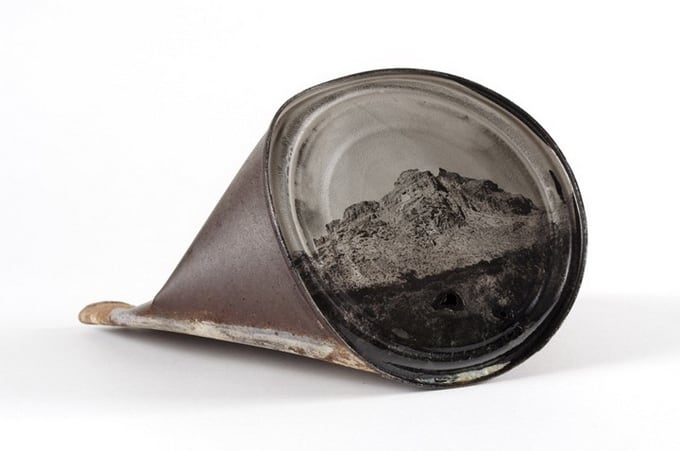Using discarded tin cans found on the hot Arizona desert ground, David Emitt Adams has created timeless pieces he calls Conversations with History. The cans are branded with tintype pictures, reflecting ties to the very locations the cans — some of which have been sitting out in the sun for over forty years — were found.
Detailed photographs applied to the bottom of tin cans using an old fashioned photographic technique. The artist says, “The result is an object that has history as an artifact and an image that ties it to its location. These cans are the relics of the advancement of our culture, and become sculptural support to what they have witnessed.”
As long as people have been in the American West, they have found its barren desert landscapes to be ideal for dumping garbage and forgetting. I was born in Yuma, Arizona in 1980 and I have never known this landscape without the forgotten debris of urban sprawl. Today, the notion of land untouched by the hand of man is so foreign it might as well be make-believe.
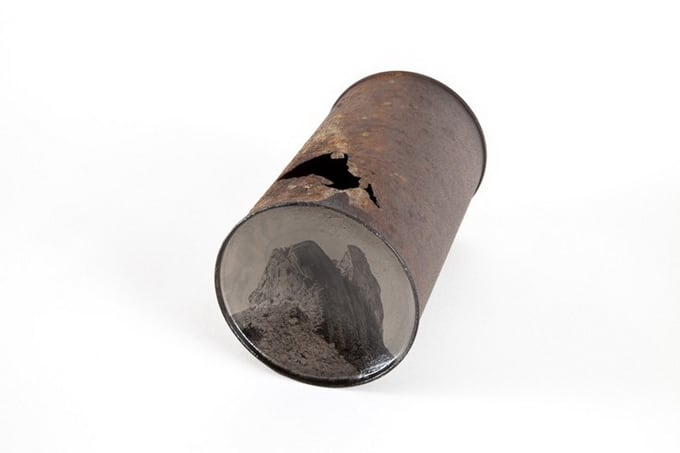
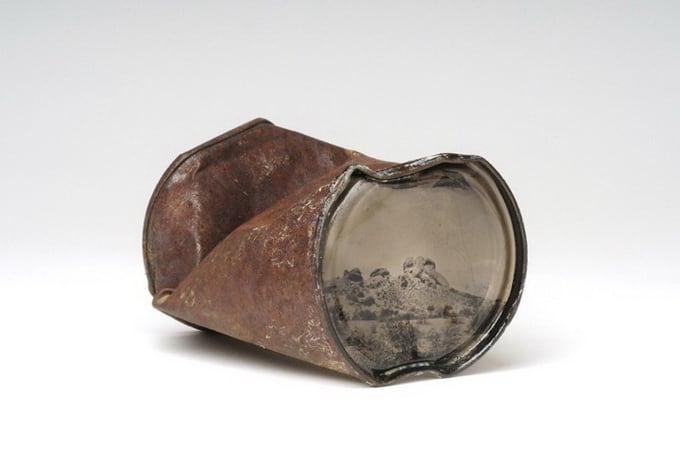
I collect discarded cans from the desert floor, some more than four decades old, which have earned a deep reddish-brown, rusty coloration. This rich patina is the evidence of light and time, the two main components inherent in the very nature of photography. For this body of work, I manipulate these found objects through a labor-intensive 19th century photographic process known as wet-plate collodion. I create images on their surfaces that speak to human involvement with this landscape. The results are objects that have history as artifacts and hold images connected to their locations.
